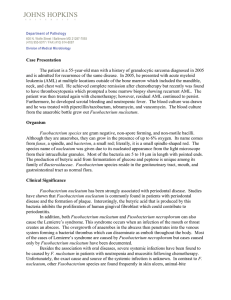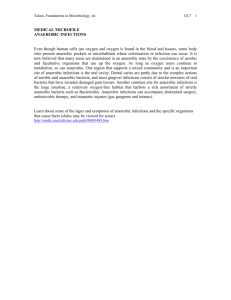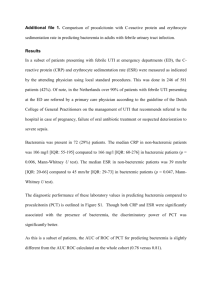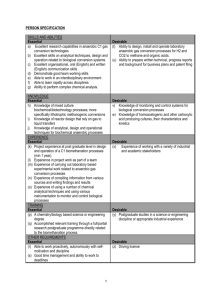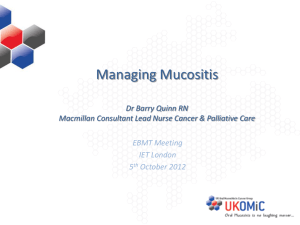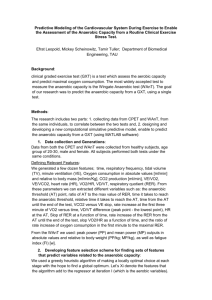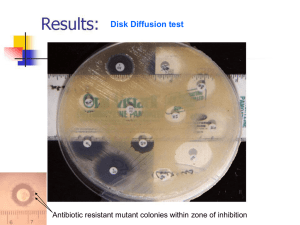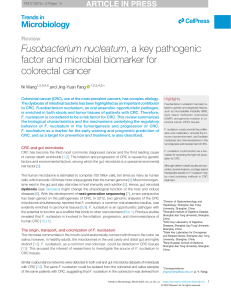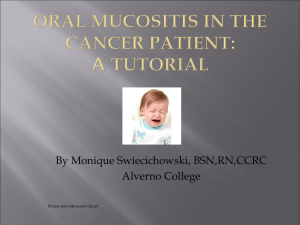No 11: Fusobacterium - Johns Hopkins Medicine
advertisement
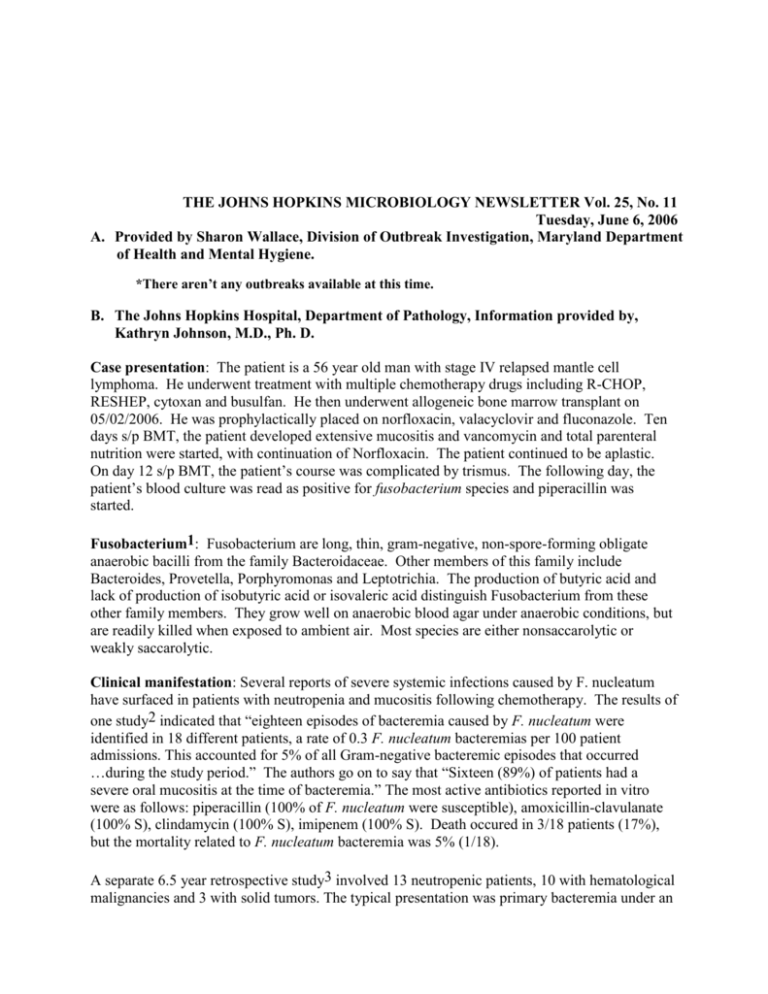
THE JOHNS HOPKINS MICROBIOLOGY NEWSLETTER Vol. 25, No. 11 Tuesday, June 6, 2006 A. Provided by Sharon Wallace, Division of Outbreak Investigation, Maryland Department of Health and Mental Hygiene. *There aren’t any outbreaks available at this time. B. The Johns Hopkins Hospital, Department of Pathology, Information provided by, Kathryn Johnson, M.D., Ph. D. Case presentation: The patient is a 56 year old man with stage IV relapsed mantle cell lymphoma. He underwent treatment with multiple chemotherapy drugs including R-CHOP, RESHEP, cytoxan and busulfan. He then underwent allogeneic bone marrow transplant on 05/02/2006. He was prophylactically placed on norfloxacin, valacyclovir and fluconazole. Ten days s/p BMT, the patient developed extensive mucositis and vancomycin and total parenteral nutrition were started, with continuation of Norfloxacin. The patient continued to be aplastic. On day 12 s/p BMT, the patient’s course was complicated by trismus. The following day, the patient’s blood culture was read as positive for fusobacterium species and piperacillin was started. Fusobacterium1: Fusobacterium are long, thin, gram-negative, non-spore-forming obligate anaerobic bacilli from the family Bacteroidaceae. Other members of this family include Bacteroides, Provetella, Porphyromonas and Leptotrichia. The production of butyric acid and lack of production of isobutyric acid or isovaleric acid distinguish Fusobacterium from these other family members. They grow well on anaerobic blood agar under anaerobic conditions, but are readily killed when exposed to ambient air. Most species are either nonsaccarolytic or weakly saccarolytic. Clinical manifestation: Several reports of severe systemic infections caused by F. nucleatum have surfaced in patients with neutropenia and mucositis following chemotherapy. The results of one study2 indicated that “eighteen episodes of bacteremia caused by F. nucleatum were identified in 18 different patients, a rate of 0.3 F. nucleatum bacteremias per 100 patient admissions. This accounted for 5% of all Gram-negative bacteremic episodes that occurred …during the study period.” The authors go on to say that “Sixteen (89%) of patients had a severe oral mucositis at the time of bacteremia.” The most active antibiotics reported in vitro were as follows: piperacillin (100% of F. nucleatum were susceptible), amoxicillin-clavulanate (100% S), clindamycin (100% S), imipenem (100% S). Death occured in 3/18 patients (17%), but the mortality related to F. nucleatum bacteremia was 5% (1/18). A separate 6.5 year retrospective study3 involved 13 neutropenic patients, 10 with hematological malignancies and 3 with solid tumors. The typical presentation was primary bacteremia under an antibiotic regimen that included anaerobic coverage. Also, oral mucositis was present in most patients. The authors concluded that “Fusobacterium bacteremia is a possible cause of febrile neutropenia, especially in the setting of quinolone prophylaxis and oral mucositis after intense chemotherapeutic regimens. We think that its benign outcome if there is no localized infection detected does not justify the use of antianaerobic prophylaxis. Combination of beta-lactams and beta-lactamase inhibitors is a safe and reasonable treatment.” Pathogenesis: Fusobacterium species are part of the normal upper respiratory, gastrointestinal, and genitourinary tract flora of humans. Given their predilection for the mouth, they are especially associated with infections of the mouth, bite wounds and the respiratory tract. The most commonly found species in clinical material are Fusobacterium nucleatum and Fusobacterium necrophorum. In the case of F. nucleatum, cells are normally 5µm to 10 µm in length and are long, slender filaments with tapered ends. Spherical swellings may be present. On anaerobic blood agar plates, the colonies are 1-2mm in diameter and appear slightly convex with slightly irregular margins. A characteristic finding is internal “flecking.” Treatment: Several antimicrobial agents are active against 36 isolates, including F. nucleatum. These include penicillin, piperacillin, cefoxitin, clindamycin, metronidazole and imipenem. References: Color Atlas and Textbook of Diagnostic Microbiology, 6th ed., Koneman. Clinical Microbiology & Infection Volume 9 Page 1112 - November 2003 Support Care Cancer. 2003 May;11(5):332-5. Epub 2003 Mar 13.
